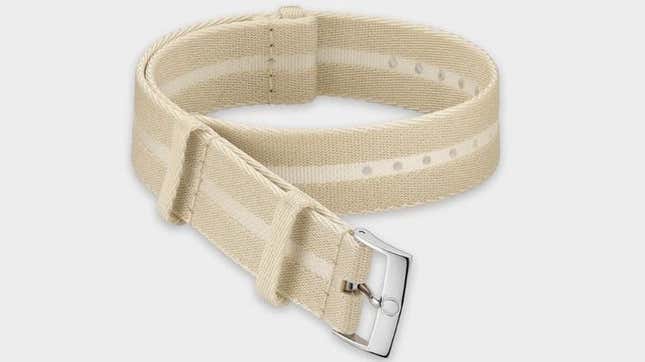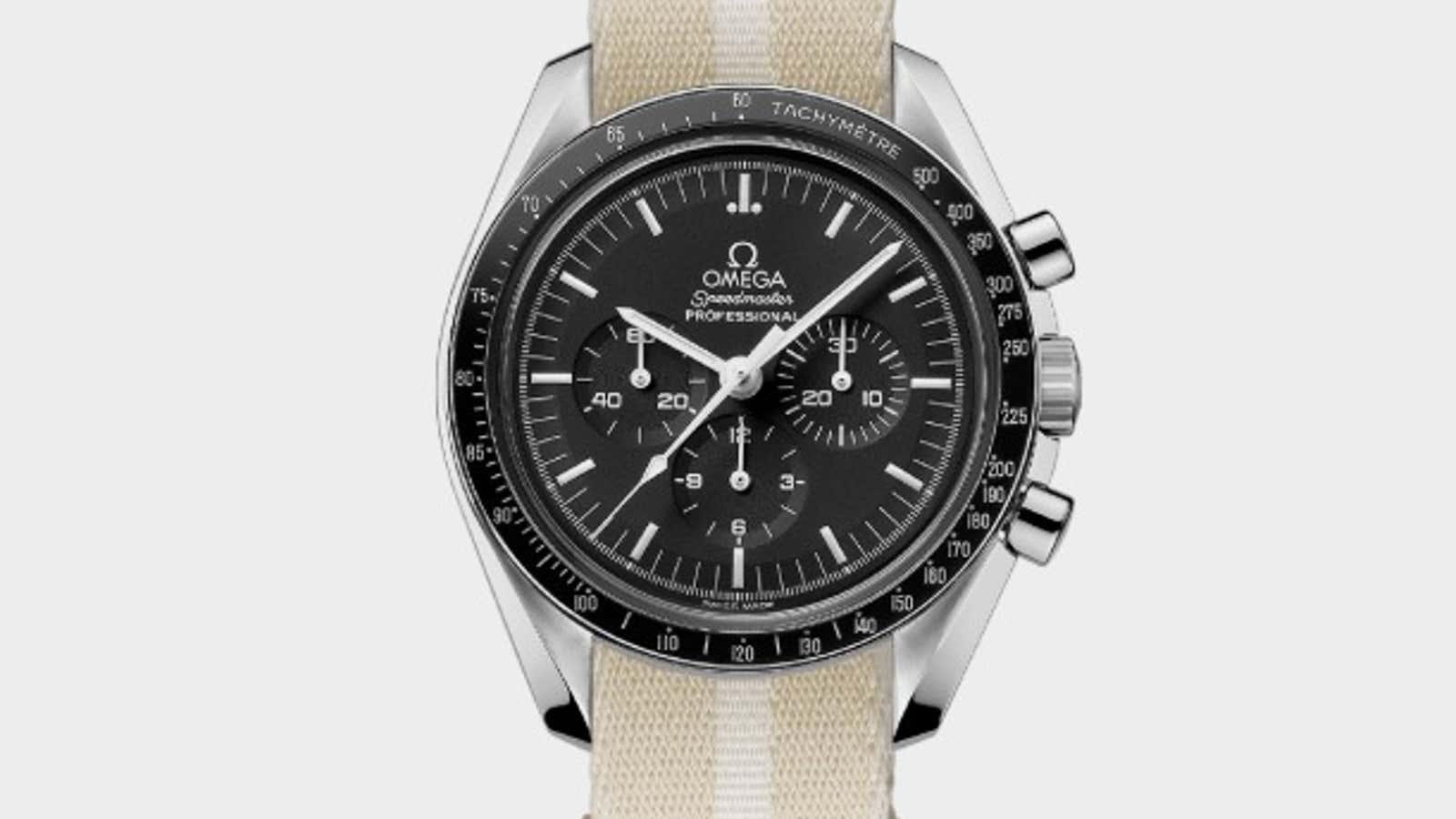Synthetic spider silk has been something of a holy grail in textile research for more than a decade. After recent advances in biotechnology finally made it feasible to create it at scale, a few companies have been working hard to do so. Now it’s starting to trickle into products that consumers can actually buy.
AMSilk, a German producer of synthetic spider silk, has teamed with Omega, the Swiss luxury-watch maker, on a Nato watch strap that blends polyamide and AMSilk’s “Biosteel” synthetic. It costs $270, is already shipping to countries in Europe, and is scheduled to be available in the US soon.

It marks the first commercially available product made with Biosteel, even if it may not be the most exciting application of the material. Humans have prized spider silk’s incredible combination of strength, flexibility, and light weight for centuries. Researchers estimate that a web of thick spider-silk fibers could halt a runaway train or catch a fully loaded jumbo jet. A watch strap won’t exactly push those capabilities. The material is also naturally breathable, anti-bacterial, and anti-allergenic, according to AMSilk CEO Jens Klein, which is part of the reason Omega was interested.
Perhaps more important, though, is that several hundred of the straps will be available, Klein says. The consumer products that AMSilk and its competitors, including US-based Bolt Threads and Japan’s Spiber, have developed so far have been one-offs and small runs that are more like proofs of concept. AMSilk had partnered with Adidas to create a sneaker made of its Biosteel, though no shoes have hit the commercial market yet. Spiber and The North Face have a prototype ski jacket. Bolt Threads created sustainable dresses with luxury designer Stella McCartney and a couple years back released its first commercial product: a $314 tie, available in limited quantities.
Still, as an industry, synthetic spider silk is in the midst of scaling up to its full potential. It may not be occurring as quickly in the realm of consumer products built around the material, but it’s happening. AMSilk, for instance, also works with cosmetics and medical companies that want the breathable, anti-allergenic qualities of its silk for applications such as nail polish and a coating for medical implants.

“I think right now there are 50 or so products worldwide which you can buy already [with our material],” Klein says. “It’s been amazingly successful.” He hints that one of the top-10 cosmetics players globally is going to launch a product this year with AMSilk’s material as the main ingredient, though he says he can’t reveal further details.
AMSilk was eager to work with Omega because of its history of innovation, Klein notes, pointing to the Omega watches Neil Armstrong and Buzz Aldrin wore when humans first set foot on the moon. He sees it as a first step of sorts for AMSilk, too, as the company expands its partners and the uses of Biosteel. “We are perfectly positioned to move now into the accessory and fashion market as well,” he says.
